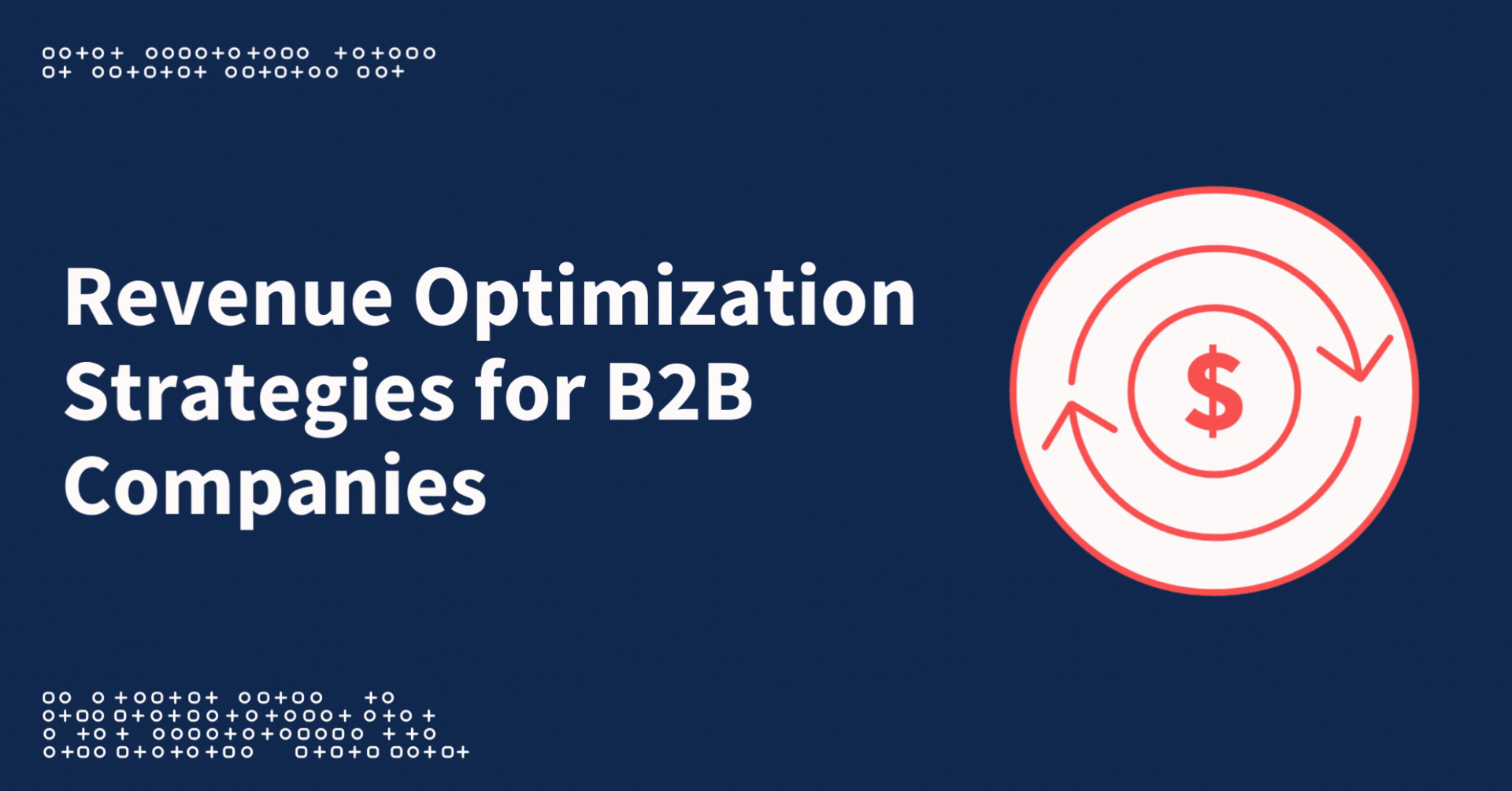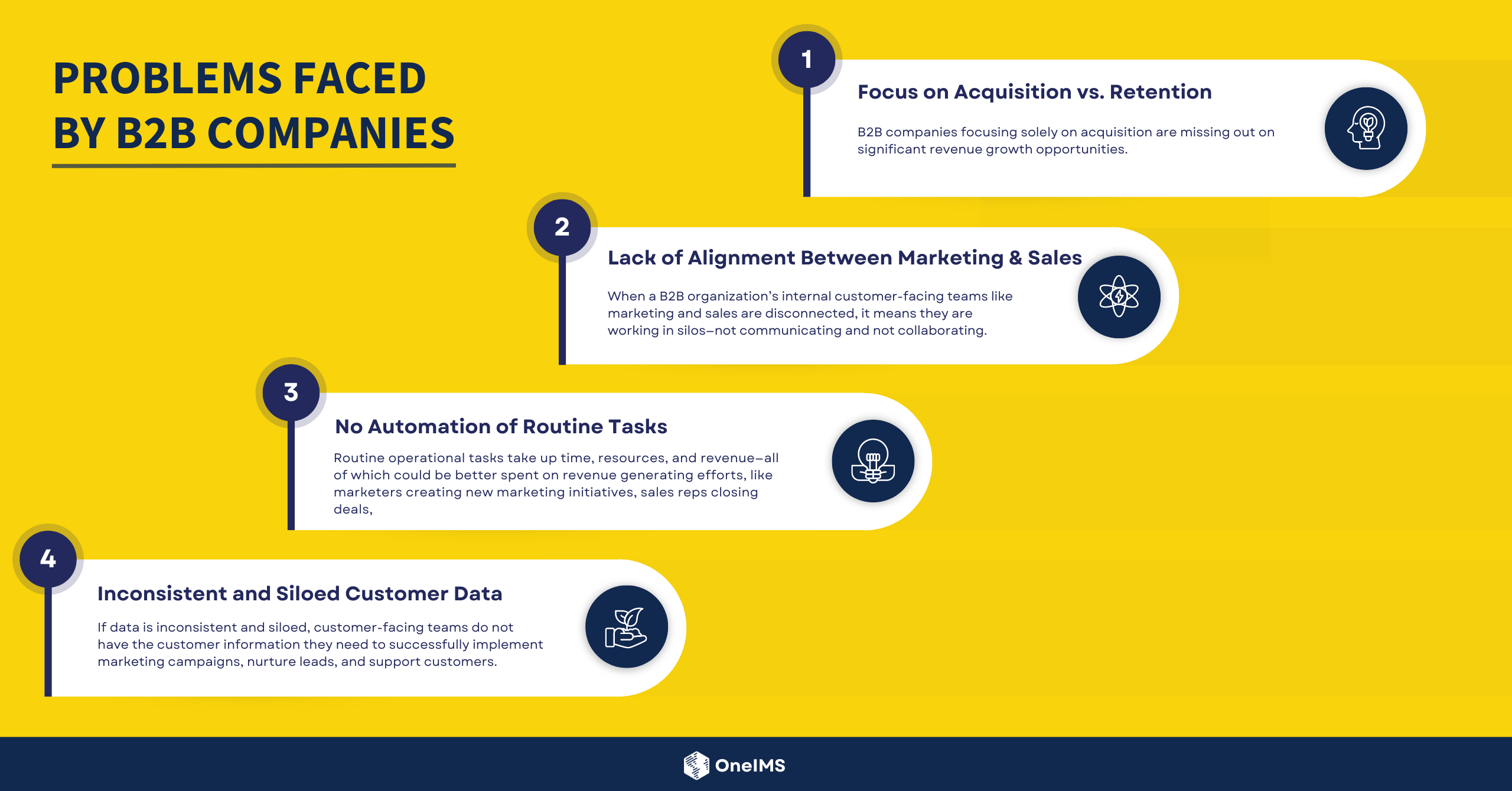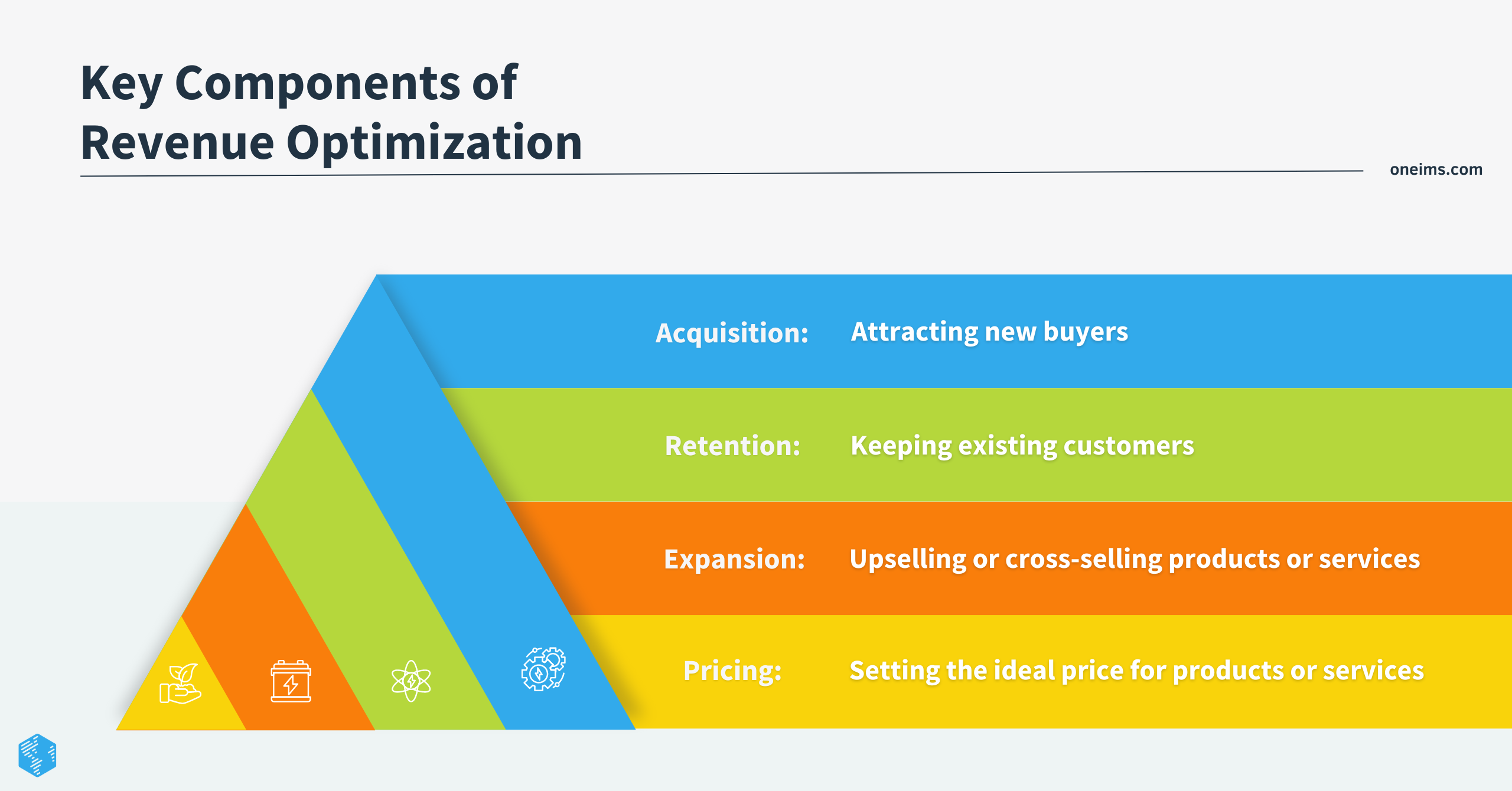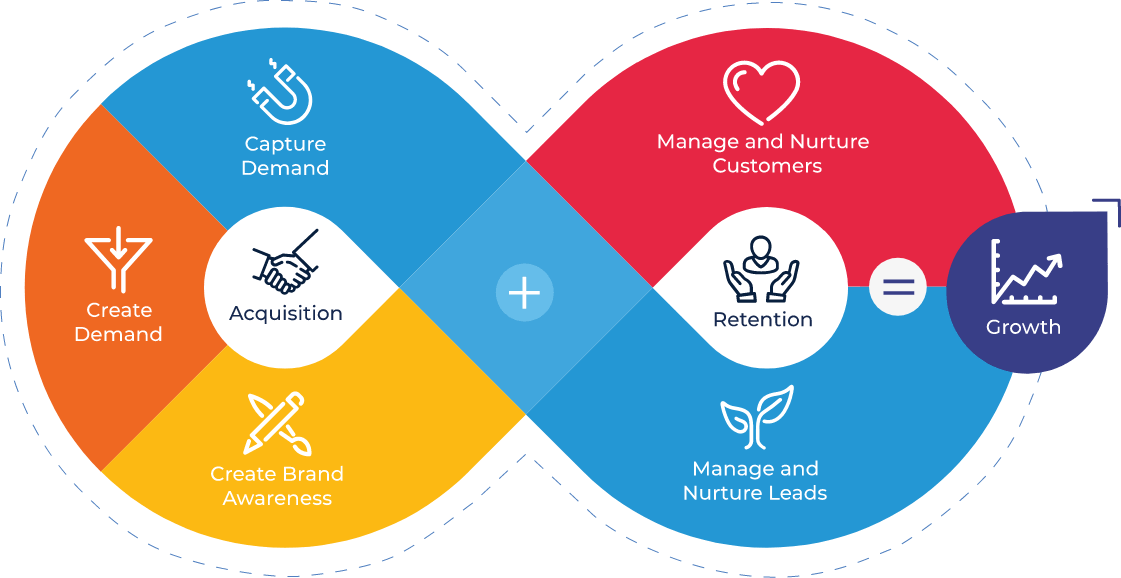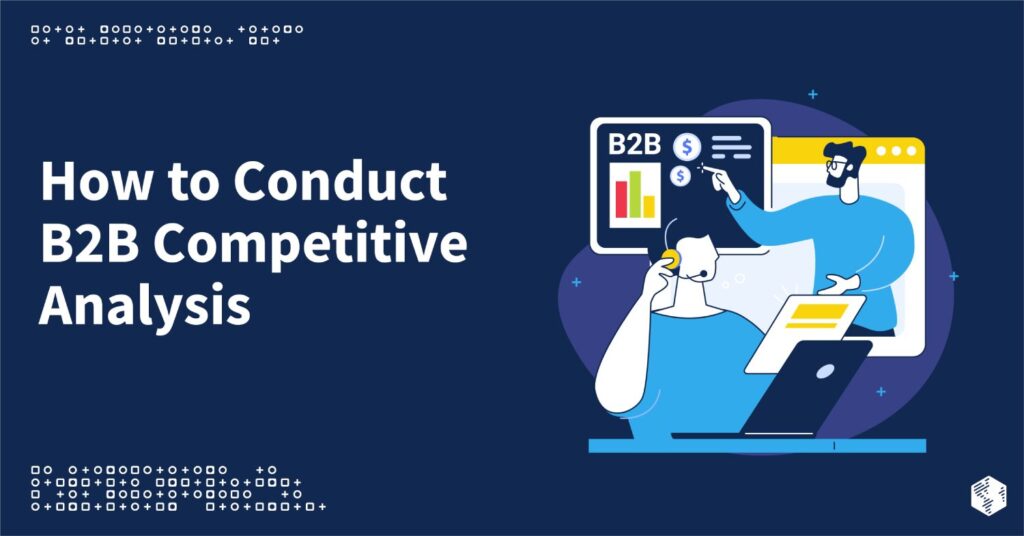What’s the best way to achieve revenue growth?
Business-to-business (B2B) companies must maximize revenue to stay competitive in today’s fierce business landscape. But there’s more to it than selling more products or signing up more customers to services. The key to increasing profits and improving revenue performance is in optimizing your existing revenue to unlock its full potential.
What Is Revenue Optimization?
Revenue optimization is the process of maximizing long-term revenue and profitability organization wide. It involves creating data-driven pricing strategies, investing in customer acquisition, retention, and expansion, and optimizing revenue processes across departments.
When a business leverages revenue optimization, the focus moves from individual revenue streams and channels to a holistic review of revenue from all avenues. By learning more about customer behavior, making informed pricing decisions, and investing in growth marketing, B2B companies can optimize existing revenue strategies and identify new opportunities for enhanced business performance and growth.
Revenue Optimization Problems Faced by B2B Companies
B2B companies face several challenges when it comes to revenue optimization. These revenue-related problems can stymie growth and prevent an organization from reaching its revenue-generating potential.
If any of these problems sound familiar, your business would likely benefit from a revenue optimization strategy.
Focus on Acquisition vs. Retention
Many businesses focus their efforts and resources on acquiring buyers, targeting new audiences, and reaching out to untouched markets. The reality is, however, that retaining existing customers is more affordable—and profitable—than acquiring new ones.
B2B companies focusing solely on acquisition are missing out on significant revenue growth opportunities.
Lack of Alignment Between Marketing & Sales
When a B2B organization’s internal customer-facing teams like marketing and sales are disconnected, it means they are working in silos—not communicating, not collaborating, and not working together to improve revenue processes. Alternatively, when marketers and sales representatives are aligned, they can enable each other to achieve shared revenue goals, making these teams more efficient than ever.
No Automation of Routine Tasks
Routine operational tasks take up time, resources, and revenue—all of which could be better spent on revenue generating efforts, like marketers creating new marketing initiatives, sales reps closing deals, and customer success agents solving problems. Instead, B2B organizations can automate these routine tasks to free up time and resources that are now available to devote to revenue growth opportunities.
Inconsistent and Siloed Customer Data
If data is inconsistent and siloed, customer-facing teams do not have the customer information they need to successfully implement marketing campaigns, nurture leads, and support customers. Additionally, revenue decision-makers won’t have the data they need to analyze and optimize existing revenue efforts.
B2B companies must ensure data is accurate, consistent, reliable and stored in a centralized location so it can be used to make data-driven decisions that lead to revenue growth.
Why Is Revenue Optimization Important?
If your B2B company wants to achieve sustainable, long-term growth, you must invest in revenue optimization.
By optimizing organizational revenue and developing a revenue generation strategy, you will ensure growth is predictable—in other words, you will avoid putting all your revenue eggs into one basket. Revenue optimization ensures your business has several durable, adaptable, and flexible avenues for revenue growth, so your B2B company can see continued, predictable success.
Key Components of Revenue Optimization
B2B companies generate revenue through four main channels:
- Acquisition: Attracting new buyers
- Retention: Keeping existing customers
- Expansion: Upselling or cross-selling products or services
- Pricing: Setting the ideal price for products or services
The ideal revenue optimization strategy takes a holistic approach by optimizing revenue generation from all four of these key components—leading to higher overall profits and long-term, sustainable growth.
It’s also important to keep in mind that these components are not siloed. As you create and implement revenue optimization strategies, remember that making adjustments in one channel can have a positive (or negative) impact on other channels. The holistic approach required for successful revenue optimization involves considering all the pieces of the revenue puzzle.
7 Revenue Optimization Strategies
Use these strategies to acquire new business, retain existing customers, expand revenue opportunities, optimize pricing, and improve organizational revenue performance.
Maintaining Good Data Quality & Hygiene
Revenue optimization relies on accurate, reliable, consistent data. Ensure your customer and revenue data is high quality and maintain data hygiene by conducting regular data audits, standardizing fields, and appropriately segmenting data. With high-quality data, you can make better data-driven decisions and improve revenue forecasting.
Investing in Customer Retention
Acquiring customers is only half of the equation. Invest in customer retention to take advantage of one of the most profitable audiences available to your business. The goal is to develop a loyal base of brand ambassadors who will advertise your company’s products or services via word of mouth and other invaluable channels, continue to purchase your products or services, and remain a predictable source of revenue for years to come.
Optimizing Pricing of Products or Services
Pricing products and services is tricky—especially for B2B organizations selling to businesses rather than individual consumers.
Using a variety of customer and market data, determine how to price your products or services to achieve a balance between the value of your offerings with what your customer is willing to pay for them. Achieving this delicate equilibrium is essential to profitability.
Taking Advantage of Account-Based Marketing Strategies
An account-based marketing approach involves targeting high-value accounts with personalized campaigns and following them closely throughout their customer journey. This process leads to a much higher return on investment (ROI) compared to other marketing methods and is one method marketers and sales representatives can use to increase revenue and improve the chances of conversion.
By spending time, effort, and resources on high-spending customers who are more likely to value your products or services, you will maximize customer acquisition revenue.
Collaborating Across Teams to Create Ideal Customer Profiles
Your marketing, sales, and customer success all learn valuable information about customers before and after the point of sale. If these teams work together, they can create well-rounded and data-driven buyer personas and ideal customer profiles (ICPs). Then, with new and improved ICPs, these teams will be better prepared to identify and nurture prospects who have a higher likelihood of becoming long-term customers.
Providing High-Quality Customer Service
The customer service experience goes hand in hand with customer retention efforts. While a frustrating, unhelpful customer service experience will make buyers look elsewhere, a positive, helpful, engaging customer experience will boost customer loyalty, encourage buyers to make repeat purchases, and increase their interest in upsell or cross-sell opportunities.
Start by creating knowledge base articles, tutorials, and trainings to teach customers about your products or services. Additionally, consider collecting customer feedback through surveys, interviews, and reviews to find out how you can improve the experience for your customers.
Automating Routine Operational Tasks
Routine operational tasks are taking up resources, time, and effort that could otherwise be dedicated to revenue-generating activities. Invest in technology that automates these administrative tasks and allows your employees to dedicate their time to working toward organizational revenue goals.
The Role of RevOps in Revenue Optimization
Revenue operations (RevOps) is a holistic approach to unlocking the full revenue potential of an organization by aligning marketing, sales, and customer success teams under the same strategic goals, processes, and technology. This organizational methodology brings revenue-generating teams together to streamline processes, centralize data, and achieve business growth.
Additionally, a RevOps strategy identifies new opportunities for revenue growth and makes data-driven forecasting to predict revenue. It not only breaks down silos and fosters collaboration across departments but also uses data and analytics to provide a comprehensive view of the customer journey.
Using a RevOps framework, B2B companies can drive business growth and optimize revenue potential—key elements to successful revenue optimization.
Implementing Revenue Optimization with RevOps
Your B2B business can start implementing revenue optimization using a RevOps approach. Follow these steps to create a RevOps strategy that maximizes revenue and powers long-term, sustainable growth.
Assess Current Revenue Processes
Start the RevOps implementation process with an audit of your current revenue processes, channels, workflows, and streams. It’s important to understand pain points and bottlenecks as well as identify your most successful revenue-generating initiatives. Determine what is working (and what isn’t) to help guide your next steps.
Establish Revenue Goals, Metrics, & KPIs
Clear, concrete revenue goals, metrics, and key performance indicators (KPIs) will help you evaluate and quantify the results of your RevOps-based revenue optimization efforts. Set goals and KPIs that align with your overall business strategy and revenue goals, ideally using the SMART (specific, measurable, achievable, realistic, time-bound) method.
For example, the revenue optimization metrics relevant to your B2B organization might include customer lifetime value (CLV), sales cycle length, and monthly or annually recurring revenue (MRR and ARR, respectively).
Create a Map of the Customer Journey
Draw a map of the customer journey, including both the acquisition and retention stages. Note all touchpoints where potential or existing customers interact with your marketing, sales, or customer success teams. This detailed map will give you a comprehensive view of the customer journey and make it easier for your customer-facing teams to understand the perspective of your customers, improving their marketing, sales, and customer success efforts.
Invest in RevOps Tools & Technology
A successful RevOps strategy relies on an integrated, centralized tech stack. Evaluate your current technology stack, find gaps and inconsistencies, and invest in technology and tools that support RevOps practices. These tools may include customer relationship management (CRM) platforms, marketing automation software, project management tools, sales enablement software, and more.
Additionally, seamless integration of these technologies across customer-facing teams is critically important. Your marketing, sales, and customer success staff must be able to access the data and tools they need using systems that are integrated within your larger tech stack.
Align Marketing, Sales, & Customer Success Teams
Break down organizational silos and align your customer-facing teams—marketing, sales, and customer success—so these departments can collaborate and work together to achieve larger organizational revenue goals.
Once these teams are on the same page, they can learn from each other, streamline handoff processes, and build a more accurate understanding of the full customer and revenue lifecycle.
A Growth Formula Framework for Optimizing Your Revenue
Our growth formula framework is designed to optimize revenue and support your growth goals. By optimizing revenue using this proven formula, your company will be prepared to grow sustainably and succeed in the competitive B2B landscape.
At OneIMS, we have a history of working with companies in a variety of industries to maximize revenue, acquire new buyers, and retain existing customers, and we pride ourselves on producing measurable and sustainable results that lead to long-term growth.
But you don’t have to take our word for it. View testimonials from our clients and read our blog to get an idea of our training, experience, and track record of success.
Are you ready to find new revenue opportunities, optimize revenue streams, and grow your business? Schedule a consultation with us today to get started.




